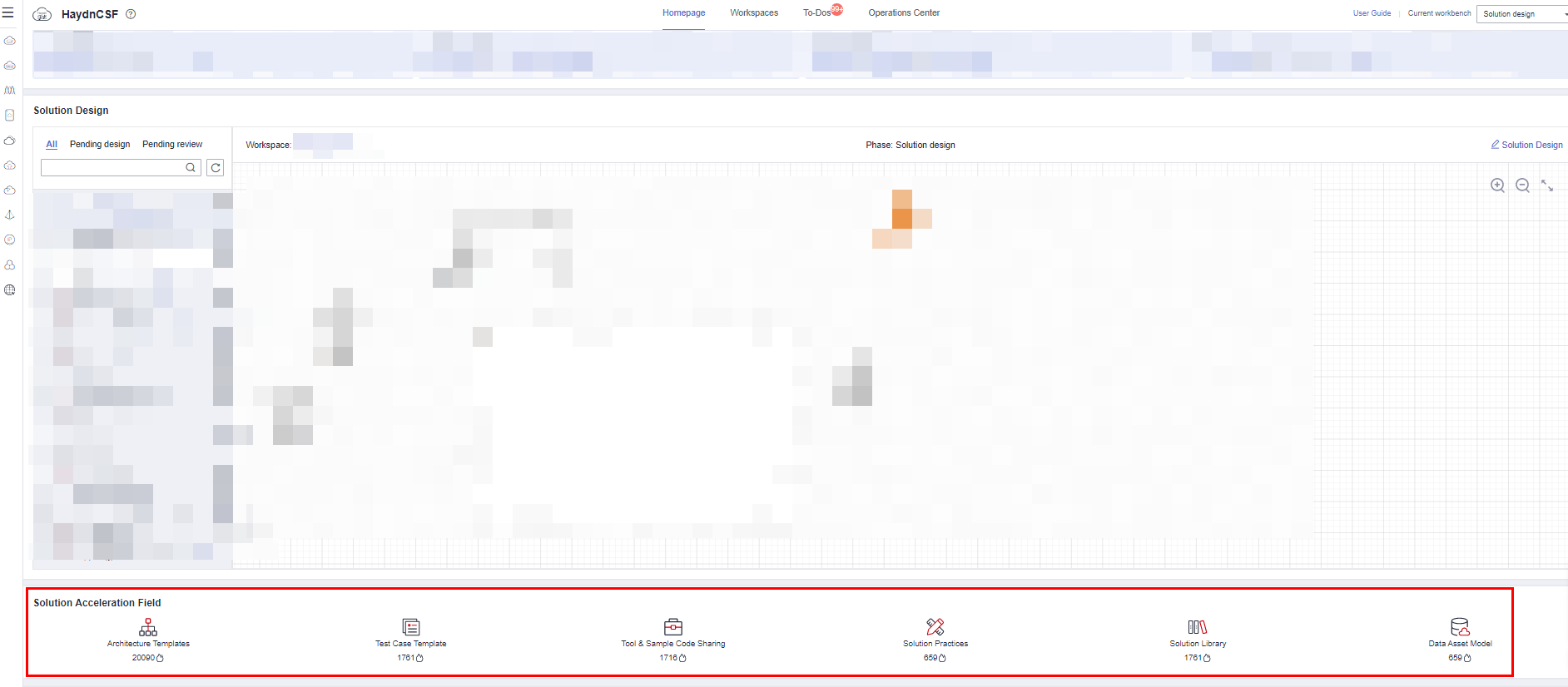Updated on 2023-12-26 GMT+08:00
Introduction
In the solution acceleration field of HaydnCSF, best solutions are continuously accumulated for sharing. The solution acceleration field consists of:
- Architecture templates: The Huawei Cloud solution team has accumulated more than 600 reference architecture templates, covering more than 300 solution scenarios. Partners can release the architecture of a verified joint solution to the solution acceleration field. The architecture can be searched and referenced by Huawei Cloud frontline personnel, partners' architects, and customers' architects.
- Test case templates: Common test cases for scenarios can be abstracted as test case templates, which can be quickly reused in similar scenarios to greatly improve the efficiency of test case design and execution. There are manual and automatic test case templates, and standard test case template sets released for scenarios such as joint operations and developers application building.
- Tool & sample code sharing: The Huawei Cloud verification team continuously accumulates in-house tools or sample code for solution building and verification, and sample code for solution practices and for product integration. Partners can use tools or sample code to quickly pre-integrate and verify cloud services.
- Solution practices: Huawei Cloud solution practices and best practices of each product are collected here for quick search. The sample code and architecture templates in the best practices will be released to the Tool & Sample Code Sharing and Architecture Templates modules.
- Design rules: The connectivity of the users' architecture design can be checked in real time based on design rules to ensure the optimal architecture design path and improve the architecture design quality and efficiency. The design rules in the design center are used to check the connectivity of cloud services paths, which are not displayed in the solution acceleration field.
- Solution library: Solution information is provided, covering solution information, architecture design, solution verification, delivery projects, and projects in maintenance.
- Data asset models: Solution information architectures are provided, including theme design, logical model design, physical model design, ETL mapping, and service metric design.
Figure 1 Solution acceleration field entry


Parent topic: Solution Acceleration Field
Feedback
Was this page helpful?
Provide feedbackThank you very much for your feedback. We will continue working to improve the documentation.See the reply and handling status in My Cloud VOC.
The system is busy. Please try again later.
For any further questions, feel free to contact us through the chatbot.
Chatbot





